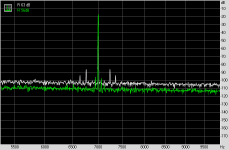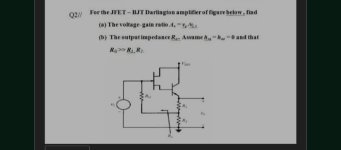Which parts are determine the line gain factor after remove the RIAA network consist of C5+10/R8+9/C4 ?
One part is the resistor R2 + the forward transfer admittance.
The gain is determined by that and by the dynamic impedance of the load, including Q1-Q4, C2, R1 and R4. For that reason R4 may need to be adjusted for the flattest frequency response at LF as Q1-Q4 parameters may vary from one manufacturer to another.
Cheers
Alex
which other available commercial RIAA head amplifiers like Creek's OBH-8 topology resp. the other here mentioned circuit versions was on the market?
Thanks for advices.
Thanks for advices.
any news ?
check out post #483 of this thread:
https://www.diyaudio.com/community/threads/cambridge-audio-a3i-repairs-and-mods.122378/page-25
and this threads
https://www.diyaudio.com/community/threads/jfet-srpp-riaa-preamp.64028/
https://www.diyaudio.com/community/threads/discrete-phono-stage-single-supply.255309/
https://www.diyaudio.com/community/threads/simplistic-njfet-riaa.129126/page-256 (#5103)
check out post #483 of this thread:
https://www.diyaudio.com/community/threads/cambridge-audio-a3i-repairs-and-mods.122378/page-25
and this threads
https://www.diyaudio.com/community/threads/jfet-srpp-riaa-preamp.64028/
https://www.diyaudio.com/community/threads/discrete-phono-stage-single-supply.255309/
https://www.diyaudio.com/community/threads/simplistic-njfet-riaa.129126/page-256 (#5103)
Last edited:
Maybe a normal or Sziklai (compound) darlington (i. e. by using an additional BjT) reduce this 4rd and 5th harmonics.
check out the attachment and
https://sound-au.com/articles/cmpd-vs-darl.htm
OTOH - I doubt, that a bit higher values for 4rd and 5th harmonics are audible.
check out the attachment and
https://sound-au.com/articles/cmpd-vs-darl.htm
OTOH - I doubt, that a bit higher values for 4rd and 5th harmonics are audible.
Attachments
Thanks for the idea. My thought was to take two 2sk170 in parallel with separate source resistors for J1, and to reduce R1 accordingly.
I thought that additional distortion shouldn't be a big deal, but in comparison with a lower gain version it sounded very dull. Bypassing R2 also reduces input overload capability in half to around 2.5mV.
Here are detailed reports.

I thought that additional distortion shouldn't be a big deal, but in comparison with a lower gain version it sounded very dull. Bypassing R2 also reduces input overload capability in half to around 2.5mV.
Here are detailed reports.

